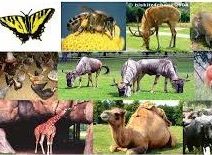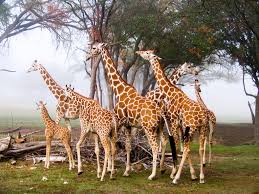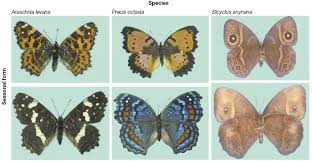The assessment of most animal species reveals phenotypic differences between individuals. For example, in cattle, there are noticeable differences in coat color and the presence or absence of horns. When cattle are weighed or their milk production is recorded, variations in performance among individuals are observed.
These differences among individuals of the same species or breed for a particular trait or characteristic are referred to as variation. Variations in weight, growth rate, feed efficiency, carcass characteristics, and disease resistance have been documented in various livestock species.
The study of variation aims to partition total phenotypic variation into components attributable to different causes. The relative magnitude of these components determines the genetic proportion of a population and the degree of resemblance among relatives.
Definition of Variation in Animals
Variation refers to the differences among individuals of the same species or breed for a particular trait or characteristic.
The assessment of animal populations shows phenotypic differences among individuals. For instance, variations exist in size, growth rate, feed utilization efficiency, carcass characteristics, and disease resistance.
Read Also: Are Honey Bees Aggressive?
Types of Variation in Animal Populations

Variation is classified into two categories, depending on the trait examined and the method of measurement used:
1. Discrete or Discontinuous Variation: Traits that fall into clearly defined categories are described as showing discrete or discontinuous variation. This type of variation is usually controlled by one or a few pairs of genes, with minimal influence from environmental factors. Examples include coat color and the presence or absence of horns in cattle.
2. Continuous Variation: Traits with numerous possible values, limited only by measurement precision, exhibit continuous variation. These traits are usually controlled by many genes and are significantly influenced by environmental factors. Examples include milk yield in cattle, weight gain, and birth weight.
Read Also: Honey Bees in Winter
Causes of Variation in Animal Populations

The causes of variation can be grouped into three main categories:
1. Genetic Sources of Variation: Genetic variation is determined by differences in the genetic makeup of individuals. The genotype of an animal is established at conception and remains unchanged throughout its life. Genetic variability arises from the combination of genes inherited from both parents. Inbreeding increases genetic similarity, particularly under directional selection, while genetic diversity within a species remains extensive.
2. Environmental Sources of Variation: Phenotypic variations in economic traits are significantly influenced by environmental factors, including disease, nutrition, temperature, and accidents. Environmental variations are crucial because:
i. They are not passed from parents to offspring.
ii. They can overshadow genetic variations.
iii. A proper environment is essential for an animal to reach its genetic potential.
Improving livestock production efficiency can be achieved by providing uniform and superior environmental conditions.
3. Interaction Between Heredity and Environment: The interaction between genetics and the environment means that animals of a particular genotype may perform better in some environments than in others. Some environments allow the full expression of genetic potential, while others limit it.
Implications of Variation in Animal Breeding
Variations in animal populations are classified as either continuous or discontinuous (discrete). Understanding these variations and their effects on phenotypic traits helps breeders select the most appropriate breeding techniques.
Traits are broadly categorized into qualitative traits, which exhibit discrete variation, and quantitative traits, which show continuous variation. The causes of variation genetic, environmental, or a combination of both play a crucial role in determining the performance and adaptability of livestock.
Do you have any questions, suggestions, or contributions? If so, please feel free to use the comment box below to share your thoughts. We also encourage you to kindly share this information with others who might benefit from it. Since we can’t reach everyone at once, we truly appreciate your help in spreading the word. Thank you so much for your support and for sharing!

